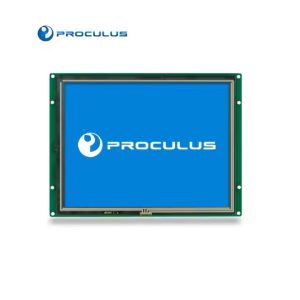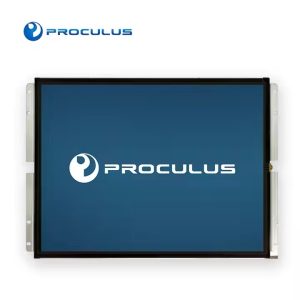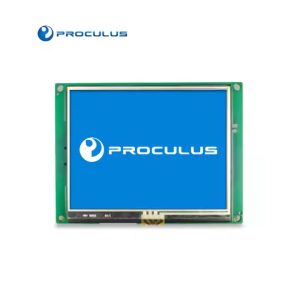What is a SCADA System?
If you’re looking to improve operational efficiency, safety, and real-time control, it’s worth learning what is a SCADA System.
Industry reports show just how important SCADA (Supervisory Control and Data Acquisition) has become: the global market is set to grow by over $5 billion within the next few years, driven by the accelerating demand for smarter, more connected infrastructure.
But what exactly does a SCADA system do, and why is it so essential across sectors like energy, manufacturing, and water management?
In this article, we’ll answer all those questions—and more—while showing you how Proculus Technologies can be your ideal partner. Keep reading!
 SCADA systems find applications in various industries and sectors. Some common examples include:
SCADA systems find applications in various industries and sectors. Some common examples include:
 SCADA systems offer numerous benefits for industrial organizations. Here’s some reasons why to use them:
SCADA systems offer numerous benefits for industrial organizations. Here’s some reasons why to use them:
What is a SCADA System?
A SCADA system (Supervisory Control and Data Acquisition) is an integrated solution combining hardware and software to monitor, control, and automate industrial operations. It collects real-time data from sensors, machines, and other field devices, processes that data, and gives operators full visibility and control—either locally or remotely. SCADA systems play a vital role in sectors that demand precision, uptime, and accountability. They allow engineers to respond to events instantly, optimize performance, reduce manual intervention, and make data-driven decisions with confidence. According to a detailed report from MarketsandMarkets, the global SCADA market is projected to grow from USD 11.2 billion in 2024 to USD 16.6 billion by 2029, at a compound annual growth rate (CAGR) of 8.3%. This rapid growth highlights how industries are doubling down on smart systems that offer centralized control, historical data analysis, and scalable integration. In short, SCADA isn’t just about automation—it’s about making your operations smarter, faster, and future-ready.How do SCADA Systems work?
SCADA systems operate by continuously collecting data from connected equipment via intelligent devices such as PLCs (Programmable Logic Controllers) and RTUs (Remote Terminal Units). This data is then transmitted to SCADA software, where it is processed, visualized, and stored. Operators interact with the system through a Human-Machine Interface (HMI), a graphical dashboard that reflects the live status of the system and allows users to monitor parameters, adjust controls, or respond to alerts. Whether adjusting temperature in a manufacturing line or controlling flow rates in a water treatment plant, SCADA gives engineers full visibility and control. SCADA’s ability to log data, trigger alarms, and run diagnostics ensures that industrial processes remain consistent, safe, and optimized—even across multiple remote sites.What are the components of SCADA System?
A basic SCADA architecture consists of several components that work together to enable control, monitoring, and data acquisition. These components include:Programmable Logic Controllers (PLCs) and Remote Terminal Units (RTUs)
PLCs and RTUs are microcomputers used as the foundation of a SCADA system. They communicate with industrial devices, such as sensors, valves, pumps, and motors, and collect data from these devices. This data is then sent to the SCADA software for processing and analysis.Gateways
Gateways act as intermediaries between the field devices and the SCADA system. They collect data from RTUs and PLCs and transmit it to the SCADA software for processing and analysis.SCADA Software
The SCADA software plays a vital role in processing, distributing, and displaying the collected data. It provides operators and employees with the ability to analyze the data and make informed decisions. SCADA software also enables real-time control and interaction with industrial devices through human-machine interface (HMI) software.Human-Machine Interface (HMI)
HMIs allow operators to interact with the SCADA system and monitor industrial processes. They provide a graphical representation of the data collected by the SCADA system, allowing operators to visualize and control the processes. HMIs can be located locally, overlooking the industrial plant, or remotely accessed from any location.Data Logging and Reporting
SCADA systems enable the recording and logging of events and data for future reference or report creation. This data logging capability allows organizations to analyze historical data, identify trends, and make informed decisions based on past performance.Examples of SCADA System Applications
 SCADA systems find applications in various industries and sectors. Some common examples include:
SCADA systems find applications in various industries and sectors. Some common examples include:
Energy
SCADA systems are used in the energy sector to monitor and control power generation and distribution.Manufacturing
Manufacturing facilities utilize SCADA systems to monitor and control industrial processes.Water and Wastewater
SCADA systems play a critical role in water and wastewater treatment plants. They monitor and control processes such as pumping stations, reservoir levels, flow rates, and water quality.Oil and Gas
The oil and gas industry relies on SCADA systems for remote monitoring and control of pipelines, refineries, and drilling operations.How to implement a SCADA System?
Implementing a SCADA solution involves several steps to ensure successful deployment:Define Monitoring Requirements
Clearly define the industrial processes and equipment that need to be monitored and controlled.Determine Data Collection Points
Identify the sensors, devices, and equipment from which data needs to be collected. Determine the data parameters and frequency of data collection.Select SCADA Hardware and Software
Choose the appropriate hardware components, such as RTUs, PLCs, gateways, and HMIs, based on the monitoring requirements. Select a SCADA software solution that meets your organization’s needs.Establish Communication Infrastructure
Set up a reliable communication infrastructure to connect the field devices to the SCADA system. This can include wired or wireless networks, depending on the application requirements.Configure SCADA Software
Configure the SCADA software to collect, process, and display the data from the field devices. Define alarms, notifications, and control logic based on the monitoring requirements.Test and Validate the SCADA System
Perform thorough testing and validation of the SCADA system to ensure its proper functionality.Training and Maintenance
Provide training to operators and maintenance personnel on how to use and maintain the SCADA system.How to choose the best SCADA System for your project?
When selecting a SCADA solution, it is important to consider the specific requirements of your organization. Factors to consider include:- Scalability: Ensure that the SCADA solution can accommodate future growth and expansion.
- Compatibility: Verify that the SCADA software and hardware are compatible with your existing systems.
- Ease of Use: Choose a solution that is user-friendly and provides intuitive interfaces for operators and administrators.
- Support and Maintenance: Consider the availability of technical support and maintenance services from the SCADA solution provider.
Why use the SCADA System in your project?
 SCADA systems offer numerous benefits for industrial organizations. Here’s some reasons why to use them:
SCADA systems offer numerous benefits for industrial organizations. Here’s some reasons why to use them:
Improved Efficiency
By providing real-time data and control capabilities, SCADA systems help optimize industrial processes, reducing waste, improving productivity, and minimizing downtime.Data-Driven Decision Making
SCADA systems enable data-driven decision making by providing operators and managers with accurate and timely information. Real-time data visualization and analysis help identify trends, patterns, and anomalies, leading to better decision making.Remote Monitoring and Control
SCADA systems allow operators to monitor and control industrial processes remotely. This capability reduces the need for on-site personnel and enables centralized control and monitoring of multiple locations.Enhanced Safety and Security
SCADA systems contribute to improved safety and security in industrial environments. Real-time monitoring of equipment and processes helps identify potential safety risks, while secure communication protocols protect against cyber threats.Regulatory Compliance
SCADA systems assist in meeting regulatory compliance requirements by providing accurate data logging, reporting, and audit trails. This ensures transparency and accountability in industrial operations.What Can Proculus Do for Your SCADA system?
If you are now looking for an HMI Display for your SCADA project, look at Proculus Technologies. As a custom LCD display manufacturer, Proculus can provide you with the custom LCD display, screen, and panel according to your demand. Our products include 3 types: UART LCM, Android display and HDMI screen. They can all work as a SCADA display. For those who want to make your application system modern and simple to use, just try our Android LCD modules. All the development is on Android OS and our high-performance processor. It is not difficult at all to build and design your SCADA software on our Android LCM because the open resources and SDK permissions are open to you. If you wish to change the interface settings, increase or decrease some interfaces, or have other special requirements, feel free to reach out to discuss your custom requirements. We are good at providing high quality/reliable customisation service on hardware interfaces for different customers’ needs. Need a reliable display for your SCADA or automation system? Find your solution at Proculus!Conclusion
Now that you know what a SCADA system is, it’s easy to see why it’s considered the nerve center of any automated industrial operation. SCADA enables faster decision-making, reduces downtime, and supports data-driven strategies that boost long-term productivity. Whether you’re managing a small plant or a large-scale distributed system, a well-designed SCADA platform provides the visibility and control required to operate smarter—not harder. If you are looking to integrate or upgrade your SCADA interface, Proculus Technologies offers high-performance HMI display modules designed to bring clarity, control, and customization to your SCADA applications. Click here to get started!
Category:
Author:
Client:
Date:
PHP Code Snippets Powered By : XYZScripts.com
 English
English


